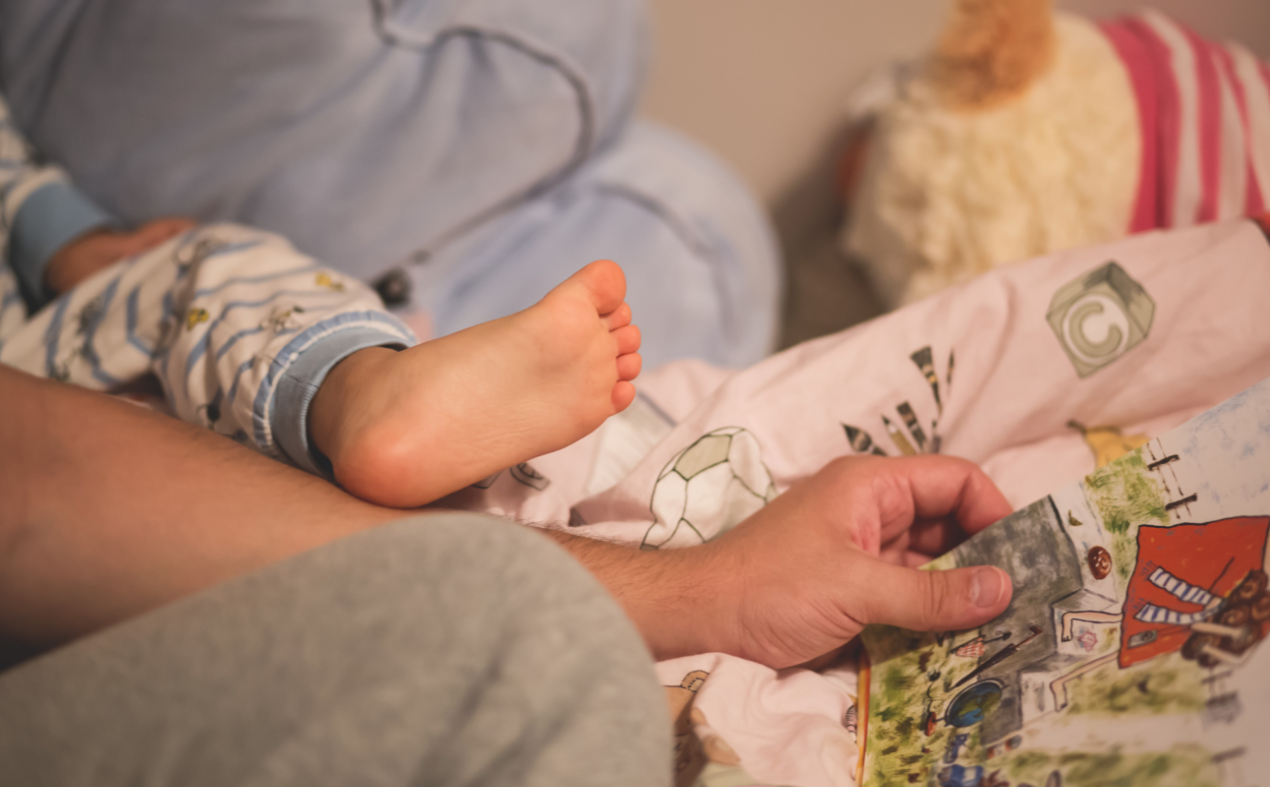Imagine getting a better night’s sleep in just a week. Or being able to reclaim nap time from your stubborn toddler? Better sleep is possible for parents. It’s as easy as putting your foot down and taking advice from our sleep experts.
It’s a familiar scene: sleep-deprived parents who have fallen into the habit of doing whatever it takes to get some sleep-whether it means rocking, feeding or even sleeping with their kids.
Certified Sleep Consultant Jamie Contarini says the thought of sleep training and possibly getting less sleep in the process can be daunting for parents.
“You are in survival mode.”
She gets it. Contarini is a parent herself and has seen a wide variety of sleep issues in her work with families around Halton and in her training with the Family Sleep Site.
While starting the sleep training process can be daunting, there are ways to make it easier.
“I would not transition from crib to bed if you are having any sleep issues,” she says. “I would resolve them first because once you transition from the crib to the bed, there is so much freedom.”
She also suggests planning to start sleep training on a Thursday, so that you can trade off taking naps with your partner over the weekend.
“It is easier if you know by the next weekend everybody is going to be sleeping,” she says.
Keep the room dark
Contarini suggests a 30 minute routine for toddlers and preschoolers, which does not have to include a bath each night.
“Sometimes it can actually energize a child so we say skip it and save it for the morning or the afternoon,” she says.
“It is just important to have that time to reconnect and unwind.”
Ideally, parents want to start the routine by going to the sleeping area and closing all the curtains in the area to create a dimly lit space.
“Darkness cues melatonin, our sleep hormone. So you really want to make that room nice and dark.”
Contarini says that parents can choose to use a Glo-clock and/or black-out curtains to help their child to know it is time for sleep.
Encourage them to sleep in
“If it bright in the morning, you are going to see five am wake-ups because they have slept 10 or 11 hours and they open their eyes and it’s bright out their body is going to tell them it’s time to go. By keeping the room dark it ‘tricks’ their body into thinking it’s still sleeping time.”
Keep the room clean
Contarini says that parents and their kids can benefit from sleeping in a calm space.
“I think we all sleep better in a less cluttered room. It’s not to say that you can’t have any toys in the room, just put them away at the end of the day. Make it part of your routine to put it away when you are done with them.”
Keep the room safe
Sleep time can be a unique opportunity for children to spend time away from their parents and practice some of the new skills they are learning without intervention. Contarini says that this is a great opportunity for children, as long as the room is safe for exploration.
“Children are always practicing new skills,” she says. “You are offering them the chance to sleep. They can take it or leave it. They will sleep when they are ready.”
It is important to make sure that all furniture, including bookshelves, dressers, and beds are secured to the wall. Take anything out that could possibly harm your child.
Toddler sleep routine
The ideal sleep routine should be consistent and take about 30 minutes.
- close curtains
- bottle (if using)
- brush teeth
- go potty (if trained)
- put on pyjamas
- snuggles
- songs
- stories
- kiss
Preschool Sleep Routine
- close curtains
- brush teeth
- go potty (if trained)
- put on pyjamas
- snuggles
- stories
- ask about their day
- kiss
Sleep Rules:
Many experts agreed that having rules around sleep can be beneficial to parents and their kids. Having clear expectations around bedtime establishes boundaries and expectations.
“At preschool age, even toddlers, their job is to push the boundaries and they are going to try. ‘Please, can I have the door open?’ ‘Please can I have one more sip of water?’” Says Contarini. “If you start responding to those requests, the requests are going to get bigger. It’s like a lightbulb goes off and they realize, all I have to do is ask. So they will ask for more and more and more.”
Parenting Expert Alyson Schafer suggests creating a short bedtime routine and using a timer to set boundaries.
“When the story is over and the alarm goes ding, that’s it. That is all the time we have for stories.”
Parenting Expert Nanny Robina suggests parents can set clear expectations by letting their toddler know prior to what is going to happen at bedtime and stick to it.
“We will read two books and then its sleep time. Stick with it and see it through.”
Contarini suggests that parents set out clear sleep rules with their children.
Let your children know that once you say goodnight they need to stay in their bed. You can assure your child you will come and get them when it is wake up time.
She says it is important to be consistent and if your child comes out of the bed, you do not engage them by speaking. You can talk to them about it prior to bedtime to let them know if they get out of bed you will be putting them right back in without talking because it is time for sleep.
“If they come out of the bed, just walk them back. It could be 1000 times the first night, but if they are getting no response, they are going to stop.”
Naptime
Sleep rules should also be in place for naptime. If you have a child who wants to run around their room rather than sleep, Contarini suggests as long as they are in a safe space, you let them do it.
“If they are in their room, they are in their room. I wouldn’t go back in. I would say, I will come to get you when it is wake-up time. Hopefully, they tire themselves out and fall asleep.”
Nap strikes
Around age two, many toddlers try to skip their nap. Contarini says for parents to not be fooled and instead to continue to offer their nap, even if they don’t sleep.
“It is normal for them to skip naps. Especially when they are working on new vocabulary and skills. They might just run around during naptime for a few days but as long as you don’t start going in and engaging them, they will start sleeping again.”
What if I put my two-year-old down at two but they don’t fall asleep until three. Do I still wake them at four?
“I always suggest waking a child if it is going to impact their next sleep time. Some kids are more sensitive and you know your child best. If it is going to impact bedtime then I would wake them at their regular time,” says Contarini.
Quiet time
Between age three and four children will start to sleep less and less during naptime. At this point, parents can encourage their children to have quiet time in their rooms without electronics.
When your child shares a room
You can still sleep train if you have more than one child in the room. Contarini suggests that if one child is a good sleeper and one needs to be trained, you can remove the good sleeper during training. Either have the child camp out in your bedroom or send them to spend a few nights with a relative.
If both children are having trouble sleeping, you can train both together in the same room.
If you find that when you put your children to bed they are fooling around and not sleeping, Contarini says there is no need to go into their room after ‘lights out’.
“Depending on the age of the kids, they may chat back and forth for two hours and I wouldn’t intervene. They are going to get sick of it and start sleeping.”
When your child is scared in their room
Schafer suggests encouraging your child to exercise their courage.
“They can create separate anxiety if they know that they can sleep in their parent’s bed. We don’t want them to gain the benefit.”
She said that you can use distraction and encourage your child to think about happy things in order to have happy dreams. Make sure they are in their sleep position (ie if they sleep on their tummy have them lie on their tummy) and offer them your t-shirt or pillowcase to sleep with.
It can be helpful to talk your child through their fears.
“You definitely want to hear them out and let them know why they don’t have to be afraid,” says Contarini. “If they say they are afraid something is going to come in their room, you can say. I am just outside. I am not going to let anything come in your room. Not a chance.”
Let your child know that you will come back and check on them before you go to sleep. If you choose to make your child monster spray, (like this awesome recipe with essential oils) it is important to make sure that you are not saying that there are monsters. You can say that the spray keeps scary thoughts or nightmares away instead of monsters.
Nightmares and night terrors
Nightmares and night terrors are a result of being overtired, or a new schedule or life change. The best way to address these issues says Contarini is to reassure your child they are safe and try an earlier bedtime. She also suggests limiting television 90 minutes before bed.
“Be consistent in how you respond to it,” she says.
She suggests sitting with them until they are calm but resisting the urge to lay with them to get them back to sleep.
“Don’t start new habits that you are going to have a hard time breaking.”
With sleep such an essential building block of health, it is important not only for kids but for their parents as well. Let us know your tips and tricks for getting sleep in the comments and we can all help each other become well-rested parents (it can happen!)
What has worked best for getting your kids to sleep? Share all your best tips and tricks so we can all rest a little easier tonight!
*Opinions expressed are those of the author, and not necessarily those of Parent Life Network or their partners.




 Sponsored
Sponsored



